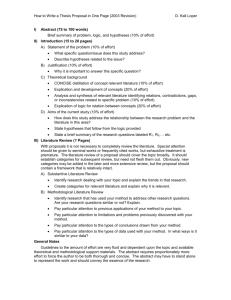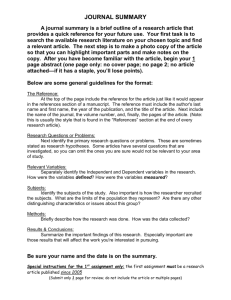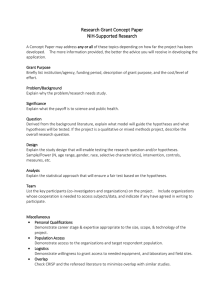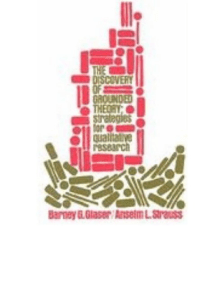Guidelines to Evaluate a Quantitative Research Study
advertisement
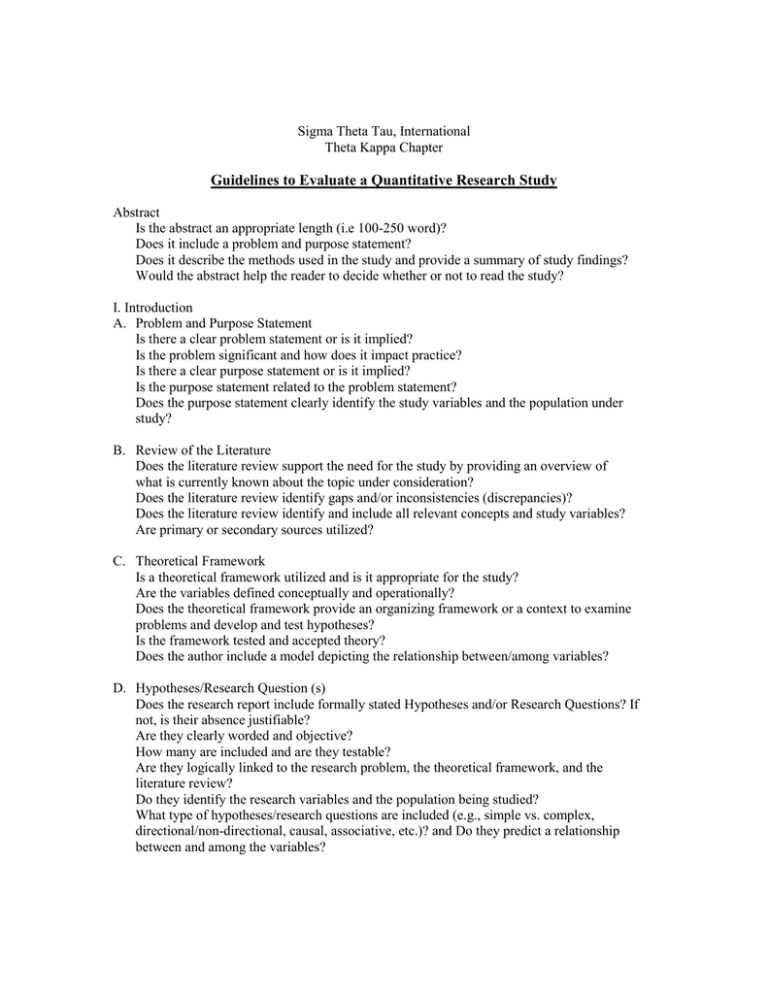
Sigma Theta Tau, International Theta Kappa Chapter Guidelines to Evaluate a Quantitative Research Study Abstract Is the abstract an appropriate length (i.e 100-250 word)? Does it include a problem and purpose statement? Does it describe the methods used in the study and provide a summary of study findings? Would the abstract help the reader to decide whether or not to read the study? I. Introduction A. Problem and Purpose Statement Is there a clear problem statement or is it implied? Is the problem significant and how does it impact practice? Is there a clear purpose statement or is it implied? Is the purpose statement related to the problem statement? Does the purpose statement clearly identify the study variables and the population under study? B. Review of the Literature Does the literature review support the need for the study by providing an overview of what is currently known about the topic under consideration? Does the literature review identify gaps and/or inconsistencies (discrepancies)? Does the literature review identify and include all relevant concepts and study variables? Are primary or secondary sources utilized? C. Theoretical Framework Is a theoretical framework utilized and is it appropriate for the study? Are the variables defined conceptually and operationally? Does the theoretical framework provide an organizing framework or a context to examine problems and develop and test hypotheses? Is the framework tested and accepted theory? Does the author include a model depicting the relationship between/among variables? D. Hypotheses/Research Question (s) Does the research report include formally stated Hypotheses and/or Research Questions? If not, is their absence justifiable? Are they clearly worded and objective? How many are included and are they testable? Are they logically linked to the research problem, the theoretical framework, and the literature review? Do they identify the research variables and the population being studied? What type of hypotheses/research questions are included (e.g., simple vs. complex, directional/non-directional, causal, associative, etc.)? and Do they predict a relationship between and among the variables? II. Methods A. Research Design What type of research design is used and is the design appropriate? What are the study variables (independent and dependent)? How does the researcher control for confounding variables? B. Sampling Describe the sample, type of sample, how it was selected. Is the sampling plan sound and well conceived? Is the sample size large enough? Could a small sample size contribute to error and reduce the power of study? Are there any ethical issues or informed consent issues? Does the author describe IRB approvals and confidentiality issues? C. Instrumentation What instruments were used to gather data (how many, describe each one-including demographic instruments)? Are they valid and reliable? What are the reliabilities? (A Cronbach’s alpha .70 or better is acceptable for a new tool, .80 or better for an established tool) What measures did the researcher take to ensure reliabilities and validities? D. Procedures How was the data collected? Are the procedures for data clearly identified so that the study could be replicated in future studies? III. Results What type of statistical analyses were used and were they appropriate? Were the findings significant and how significant? What type of statistical analyses are reported (descriptive, t-tests, multiple regression, anova)? IV. Discussion Does the author provide an overview of major findings? Are results interpreted in the context of the problem, purpose, hypothesis and framework? Are findings discussed in terms of other research findings? Does the author identify threats to internal and external validity? If not, what are the threats? Are practice-based implications and recommendations for future research discussed? JRK
